In games like Progenitor it's not uncommon for a player to get into a commanding position: a place of power which can make them seemingly unassailable. In Progenitor this manifests in two ways:
- Play Presence.
By having a lot of cards in play you can have a plethora of effects continually providing you with benefits. Defensive cards can stop any opponent from messing with you, while utility cards like Permutator (2ER, +2, At the beginning of your turn you may look at the top card of your draw pile, then discard it or put it back.) or Entropy Engine (3ER, +0, At the beginning of your turn draw a card) can give you extensive card draw or a way to lock-down / control your adversaries.
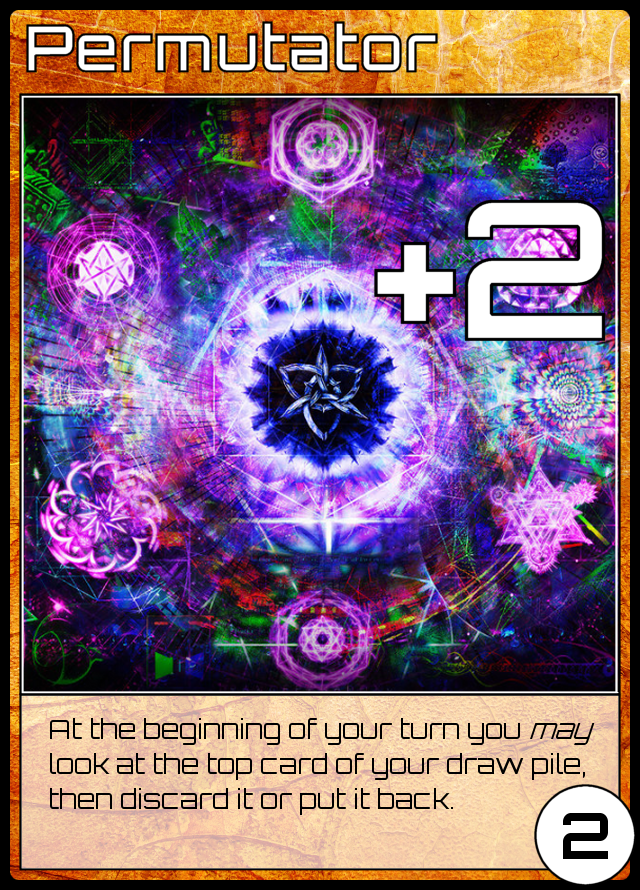 |
| Having this in play is pretty nice... |
|
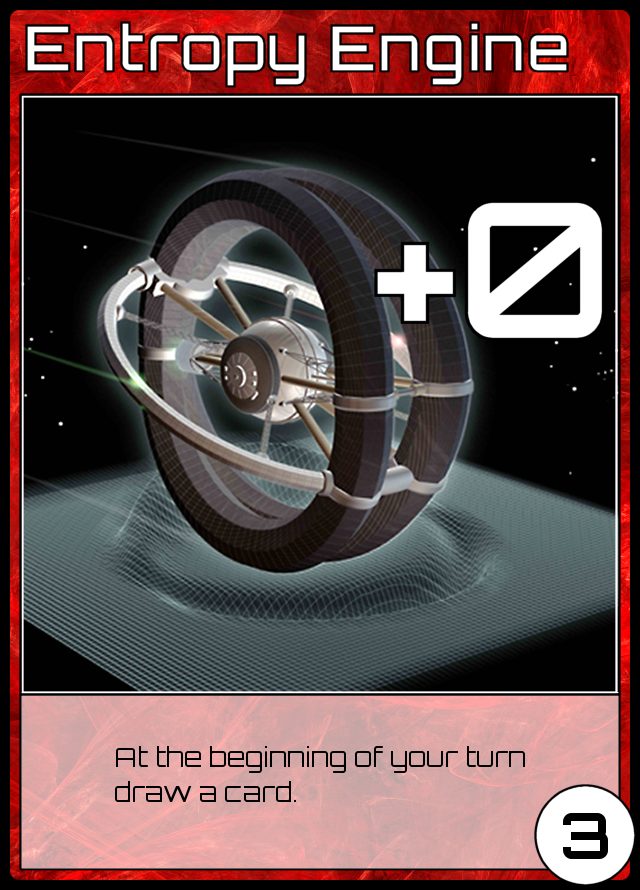 |
| ...but not as nice as this. |
|
- Hand Size.
Your hand is your materiel, your ammunition. The more cards you've got in hand the more options you have in your turn. Add to that the presence of defensive cards like Blink Drive (2ER, -1, You may play this card when an opponent targets you or your cards to nullify opponent's card, played: Draw a card) and a large hand of cards can give you a large psychological advantage, as well as the actual advantage of having lots of answers to your opponents plays.
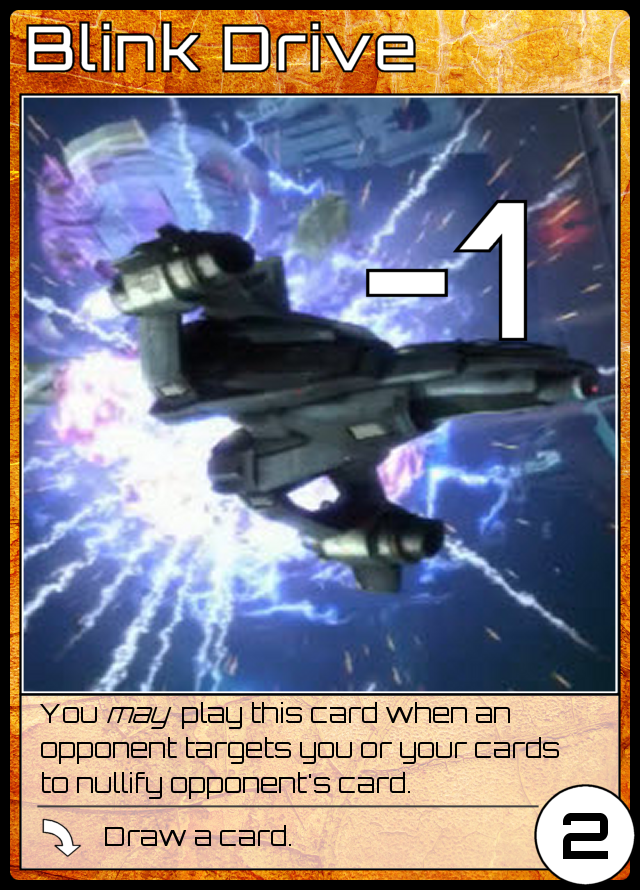 |
| Simply having this in your deck can deter opponents. |
There are two key play mechanics in Progenitor aimed at redressing these advantages. That is not to say it removes them: after all, a player who has played well enough to get into a position of power deserves to be rewarded for it. They do, however, provide a couple of ways through, a couple of chinks in the armour that a canny player can take advantage of to pull a game back in their direction.
First is the
purge. If you remember
from the synopsis, purging is one of the three basic actions you may can choose from in your turn. When a player purges they take three steps in order:
- They work out their total Energy, and how many Primes they have. They then gain cards from the board up to those limits: they may gain up to their Primes number of cards, and the total Energy Requirement of the cards they gain may not exceed their Energy. For example, if they have two Charge cards and a Supply Shuttle in play then they have a total of 3 Energy and 2 Primes. They may gain:
- One 1ER card and one 2ER card
- Two 1ER cards
- One card with 3ER or less
- No cards at all (if they wish)
- They check for any purged effects on the cards they have in play, and trigger them in whatever order they want.
- They destroy all cards they have in play.
Step 3 is the important one here: in order to gain cards from the board... that is, in order to build their deck
in this deck-building card game, they must reset their Play Presence to zero. Every time a player wishes to improve their deck they will have to start building up again from scratch.
The second mechanic is the
turnover. This occurs when a player runs out of cards in their draw pile. If a player needs to draw a card (either because they have taken a Draw action, or because a card effect tells them to) and they have no cards in their draw pile then they do this:
- Reveal their hand to all players then discard it.
- Shuffle their discard pile: it becomes their draw pile.
- Draw a card.
Here step 1 is the crux: when a player draws all the way through their deck and then has to draw again they lose their hand, regardless of how many cards are in it. A sensible player will of course play all the cards they want to from their hand before drawing from the empty draw pile, but card effects can cause them to draw when they do not wish to (see
Blink Drive and
Entropy Engine above), and there is nothing stopping their opponents from playing cards to make them draw. "Wasting" a
Materiel on an opponent may feel wrong, but watching them go from a 13 card hand to a 3 card hand* will give you the warm-and-fuzzies.
N.B. Causing a turnover at inopportune times can be useful outwith destroying their hand. The turnover is the point at which all the cards they've gained on this pass though their deck will be shuffled in, ready to be drawn and used. When playing it's desirable to purge just before the turnover in order to get the new cards operational as soon as possible. Making someone trigger a turnover before they are ready can result in them having to go all the way through their deck again in order to shuffle in their latest purchases.
*In this hypothetical situation, where you cause the opponent to go from a 13 card hand to a 3 card hand you have played
Materiel on them when their draw pile was empty and caused them to discard 13 cards then draw 3:
that's a 10 point loss of tempo!
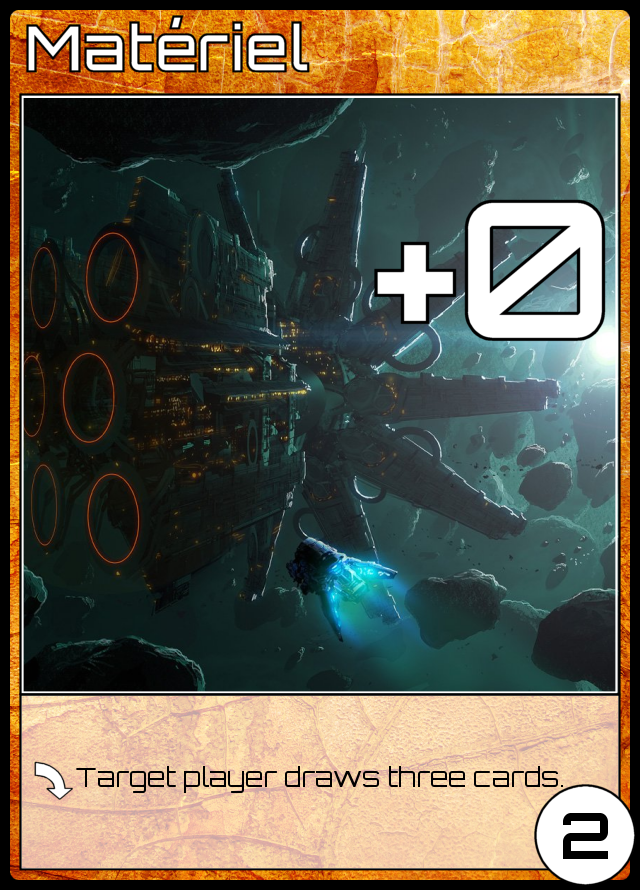 |
| Not just a pretty... great way to
fill your hand; can also be the best offensive card in the game. |
Art assets on prototype cards are the property of their respective owners, and are used without permission.

![Charge +1, 0ER, [starting deck is made of these]](http://www.onelivesleft.com/cardgame/cards/Charge.png)
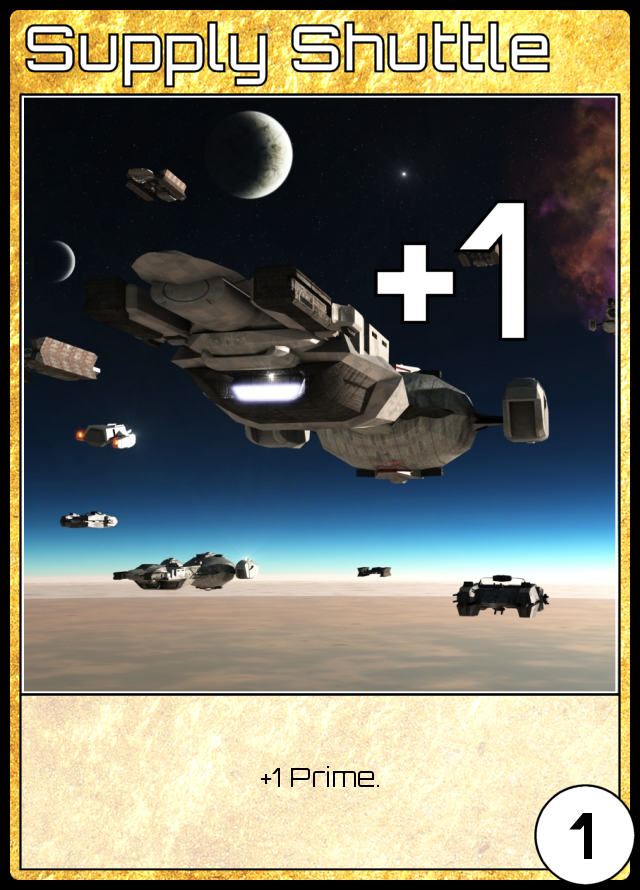




No comments:
Post a Comment